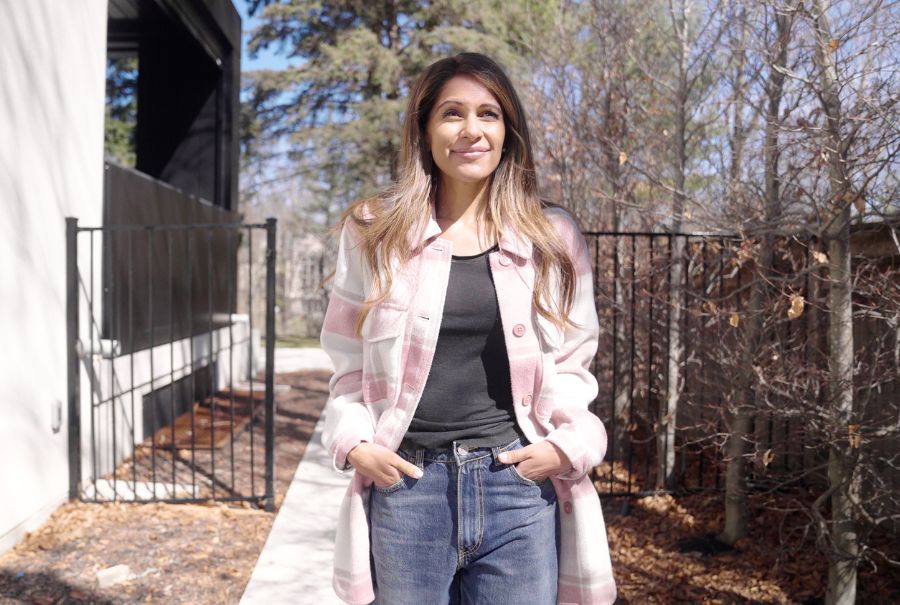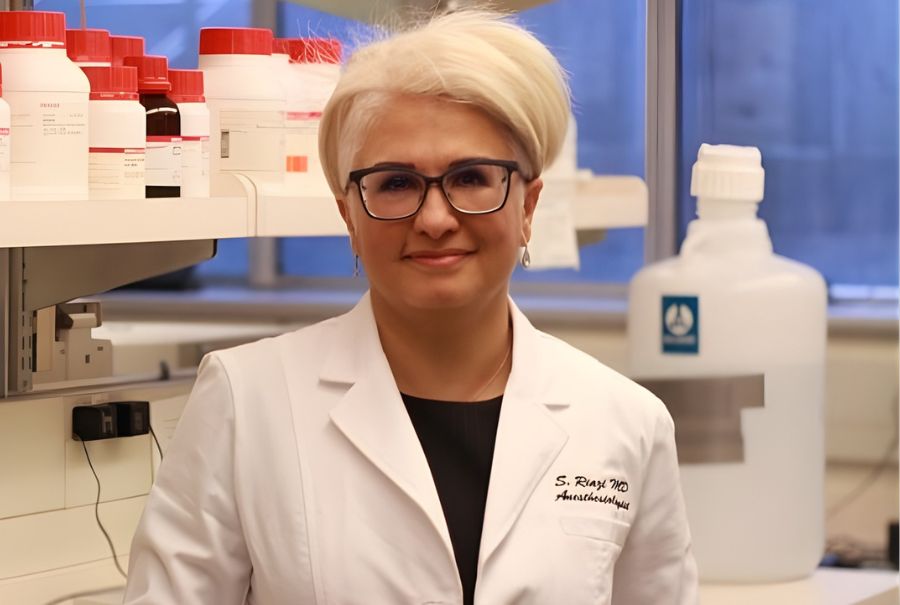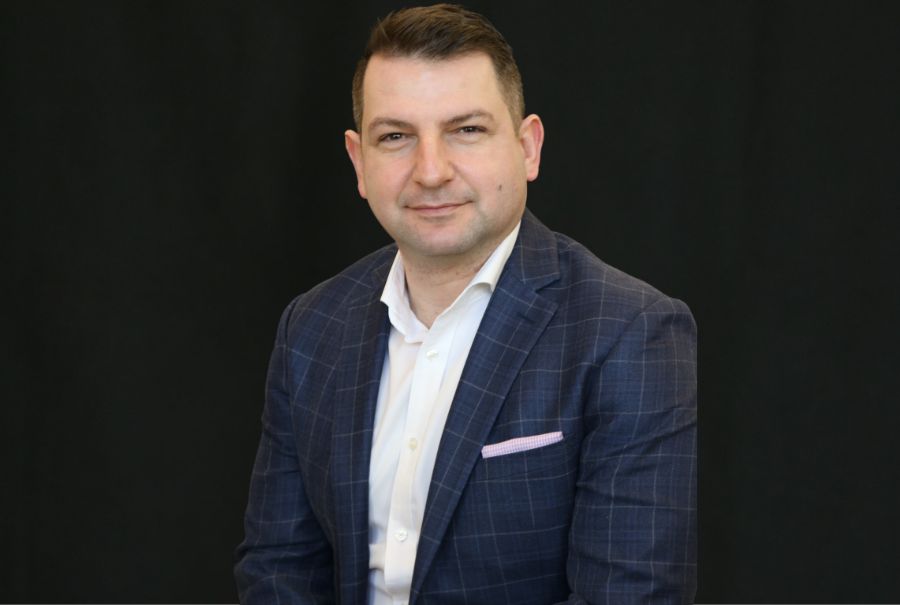“We may have only a short time before a new pathogen comes calling,” writes Brian Hodges, UHN’s EVP Education and Chief Medical Officer. “When it does, we must have a full and robust complement of health professionals before the crisis hits.” (Photo: UHN)
By Dr. Brian Hodges
In 2016, UHN and the Michener Institute engaged in a bold experiment – fully integrating a school of health sciences into a hospital. In two years of stakeholder engagement prior, a wide variety of views was expressed. Though largely positive, there were naysayers. One colleague fretted about going back to the “old days” when hospitals had their own nursing schools. A senior leader told me, “colleges and universities are the educators and hospitals need to stick to delivering care.” A university sector leader challenged my argument that health care education must be able to pivot quickly: “So it takes a decade to change a health sciences curriculum, I don’t see the problem with that.”
Then, four years after integration, COVID-19 overtook the world. In the first month, intensive care units (ICUs) in Europe exploded with cases. Even the general public learned an “aerosol generating procedure” was a huge risk. Fights broke out between countries over the supply of N-95 masks. But fewer people had heard of the profession “respiratory therapist” (RT). They run ventilators. Of the 11 aerosol generating, high-risk procedures, they perform seven of them. And, there was a shortage of RTs before the pandemic.
When anxiety began rising in ICUs, leaders at the Michener School of Applied Health Sciences sought permission to accelerate the final year of RT training. In just days, graduates, who would typically be wrapping up clinical placements, preparing for exams and looking for work, were deployed – weeks before the normal graduation day – into critical care units. The students rose to the occasion with passion and dedication. But I have talked with some of them; it was scary to have a first assignment with COVID patients in an ICU. A year later, they are still running hard. Levels of stress and burnout are very high in these departments and the end is not in sight. They were needed, and they were willing. But a little voice in my head wonders at what cost we accelerated their careers. I teach a death and dying curriculum to first-year RT students. I didn’t imagine they would need to apply this learning so soon and so often.
– Dr. Brian Hodges‘It’s no longer okay for hospitals to argue they are too busy or too overwhelmed to provide clinical placements. We need to redesign our workplaces so essential education is never interrupted.’
Then, on Easter weekend, we got a call from the Ministry of Health. It looked like a lot of health professionals who had never worked in ICUs might be needed there. Could we create a curriculum, available online and to be taken in under two days, to prepare them to also work in ICU? Prepare them to do what? The answer was to assist with critically ill COVID patients, to support those on ventilators and to be deployed, if needed, on expanded ICU teams, which might have many fewer nurses and doctors than required. The team at our School of Continuing Education seconded 50 experts and educators, and in 12 days built that curriculum. Criticalcarelearning.ca was used by hundreds in Ontario’s 190-plus hospitals, anxious about being assigned to an ICU.
Soon after, COVID was rampaging through long-term care homes (LTCs). Hospitals were asked to send help to act as personal support workers (PSWs). But they don’t typically employ PSWs and very few acute care staff have worked in long-term care. Again, Michener’s Continuing Education team led a large group to build – in days – an online program enabling redeployed doctors, nurses and others to learn about long-term care, patient feeding, toileting, bathing, transfers and personal protective equipment. UHN CEO, Dr. Kevin Smith, took the training before helping with patients. So did an internist, a cancer physician, a physiotherapist, a medical student, a nurse manager and many others at UHN who provided more than 1500 shifts in April at LTCs we supported. By then, the program was used by 10,000 health care professionals across Ontario.
In June, it was apparent COVID testing was bogging down. For years, there’s been a shortage of medical laboratory technologists (MLTs) that’s not matched by the number graduating. The reason is schools such as Michener cannot expand enrolment because hospitals and clinics in Ontario are unable to provide enough placements for learners to gain hands-on experience. In normal times, that’s an irritant. With COVID, it’s deadly. MLT training takes three years. There was no time. In weeks, teams from Michener’s Schools of Applied Schools Health Sciences and Continuing Education collaborated to build an emergency program to train more than 500 assistant technologists who were rapidly deployed to COVID testing labs across Ontario. These remarkable individuals helped to save the day, but the shortage of 4,000 MLTs is still there.
Last summer, as wave one was receding, hospitals such as UHN, which had cancelled or delayed the surgery of many very sick patients, began to have capacity to scale up surgery and procedures. But ramping up operating rooms proved difficult. It wasn’t just the continuing pandemic or that staff returning from long-term care, COVID wards and ICUs were exhausted. It was a shortage of 270 nurses. Just at UHN. It’s a similar story at every hospital around us. And, it’s going to get worse. In normal times, UHN has more than 1200 nursing students consolidating their knowledge for a year before graduation. Those clinical placements were cancelled during wave one. UHN’s nursing school affiliates are desperate to find clinical placements for their students. Despite the efforts of UHN’s Clinical Education and Student Services teams, acute care hospitals in full-on pandemic mode feel incapable of dealing with COVID and providing education. UHN has about one-third the usual placements.
In the fall, as wave two hit, I was on a Zoom call with medical residents. At UHN, there are 1500 of them and 500 fellows. With the exception of international learners who couldn’t enter Canada, all have worked throughout the pandemic. Their education programs are collaborative between the University of Toronto and the Toronto academic hospitals. On that call, I could hear the exhaustion, the fatigue and the fear. Wave two brought with it hospital outbreaks that overran acute care wards. No Toronto hospital was spared. Medical educators are doing everything they can to support learners while working in full COVID care mode themselves. But I couldn’t help wonder if we’re doing enough to support and protect our learners. Is it even right they should continue to care for the sickest COVID patients?
– Dr. Brian Hodges‘As educators, we must help learners – and by “learner” I really mean everyone, whether in a pre-certification program or continuing education in practice – to reflect on COVID, to consolidate their learning and make sense of the experience.’
The pandemic has shone a light on education – and the incredibly dedicated teams at the Michener, the University of Toronto and across UHN who direct, organize and operate it – like never before. By choosing to “protect” some from the dangers of COVID, we have inadvertently aggravated shortages already there. It’s now urgent to address insufficient numbers of MLTs, nurses and others. It’s no longer okay for hospitals to argue they are too busy or too overwhelmed to provide clinical placements. We need to redesign our workplaces so essential education is never interrupted.
For those whose work intensified – for medical learners, RTs and others – we need to learn from their experience. They will never forget being at the forefront of COVID. Their role models have also been affected – some say this is a tipping point and they are considering retiring or changing career focus. I hope when the fatigue recedes, these battle wounds heal and they emerge stronger. But as a psychiatrist, I know trauma doesn’t always make a person stronger. As educators, we must help learners – and by “learner” I really mean everyone, whether in a pre-certification program or continuing education in practice – to reflect on COVID, to consolidate their learning and make sense of the experience.
Over the past three months, I have been part of something called #TeamVaccine; working every day since New Year’s Eve to vaccinate residents in all of Toronto’s LTCs and retirement homes, and help mount UHN’s four vaccine clinics. Deaths and cases at LTCs have plummeted. We are winning. This gives me hope. But as COVID begins to recede, we need to dust ourselves off and look around at our learning environment. It’s not the same as it was in December 2019.
We may have only a short time before a new pathogen comes calling. When it does, we must have a full and robust complement of health professionals before the crisis hits. The next time, all our education institutions must be able to turn on a dime to respond to system needs. We must be certain our hospitals and clinics can keep the lights on for learners in every profession, so we can avoid, at all costs, any interruption in the pipeline of new health professional graduates. In short, we must bring education and health care firmly and finally together. They are not separate; they are the same system.
Dr. Brian Hodges is Executive Vice President Education and Chief Medical Officer, UHN, and Professor, University of Toronto


